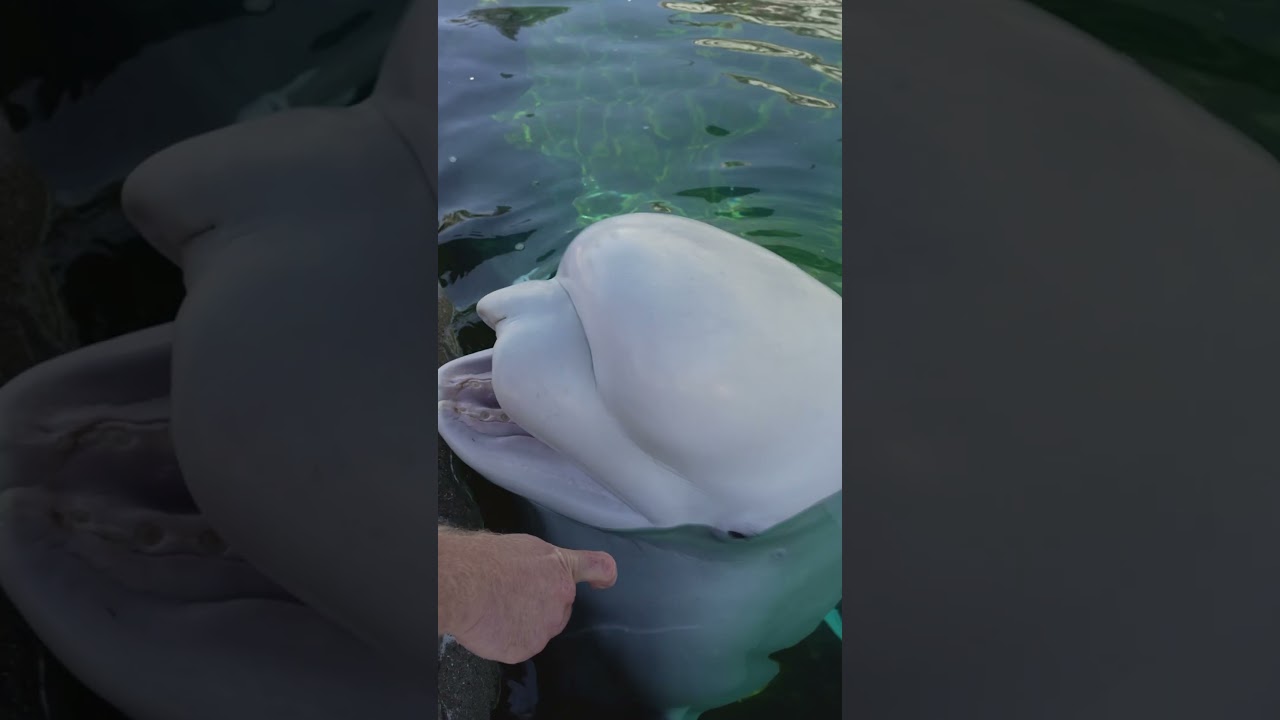- The anatomical structure of melon in marine mammals and its functions
- Insights into Juno’s behavior and the significance of her melon’s movement
- The role of zoos in conservation and education efforts for marine species
- How advancements in technology contribute to our understanding of marine life
- Strategies for effective wildlife conservation and the Challenges faced
The anatomy of the melon among marine mammals, including dolphins, belugas, and other toothed whales, reveals a fascinating aspect of cetacean adaptation to their aquatic environment. The melon, a mass of fatty tissue found in the forehead of these creatures, plays a pivotal role in echolocation—a biological sonar used for navigation and hunting underwater. In species like Juno, a well-known beluga whale, observing her melon’s movement is a unique spectacle and an educational tool highlighting the marvels of evolutionary biology.
Juno’s melon showcasing movement highlights its functionality in sound wave manipulation. This movement, commonly called the “jiggle,” is fundamental for focusing and directing sound waves produced by the whale. When Juno’s melon jiggles, it demonstrates real-time adjustments in echolocation abilities, an essential survival tool in the ocean’s murky depths. This behavior captivates audiences and serves as a conduit for broader discussions on marine biology and the intricacies of cetacean life.
Zoos and aquariums, like the one Juno inhabits, have transformed from mere venues of entertainment to centers of education and conservation. These institutions are crucial for fostering a connection between the public and wildlife, offering firsthand experiences that inspire conservation awareness and action. Through the care and study of animals like Juno, zoos contribute significantly to our understanding of species biology and ecology, aiding in developing conservation strategies for endangered marine populations. By sharing knowledge and research outcomes, such facilities play a vital role in the global effort to preserve biodiverse ecosystems.
Technological advancements have profoundly impacted our comprehension of marine life, enabling researchers to study animals in captivity and their natural habitats with unprecedented detail. From noninvasive tracking devices to sophisticated sonar imaging, technology allows scientists to observe phenomena like Juno’s melon movement in real time, providing insights into animal behavior, physiology, and inter-species interactions. These developments enrich our knowledge and enhance conservation efforts, offering tools for monitoring the health and populations of marine species over vast oceanic expanses.
Addressing the challenges of wildlife conservation requires a multifaceted approach. Habitat destruction, climate change, and pollution threaten marine species significantly. Effective conservation strategies must include robust legal protections, habitat restoration initiatives, and public education campaigns to reduce human impact on the oceans. Additionally, fostering global cooperation and engaging local communities in conservation practices are essential for the sustainability of marine ecosystems. The spectacle of Juno and her jiggling melon reminds us of the beauty and complexity of marine life, underscoring the urgency of conservation efforts.
In sum, the movement of Juno’s melon is not just an amusing display; it encapsulates significant biological functions and serves as an educational springboard into cetacean biology, zoological management, and conservation concerns. Through diligent observation, research, and public engagement, institutions that house creatures like Juno provide valuable contributions to our understanding of marine species and the ever-pressing need to protect the oceans. This synthesis of entertainment and education underscores the role of zoological facilities in bridging the gap between humanity and the aquatic world, fostering a deeper appreciation and commitment to preserving the marvels of our planet.
*****
Source Description

